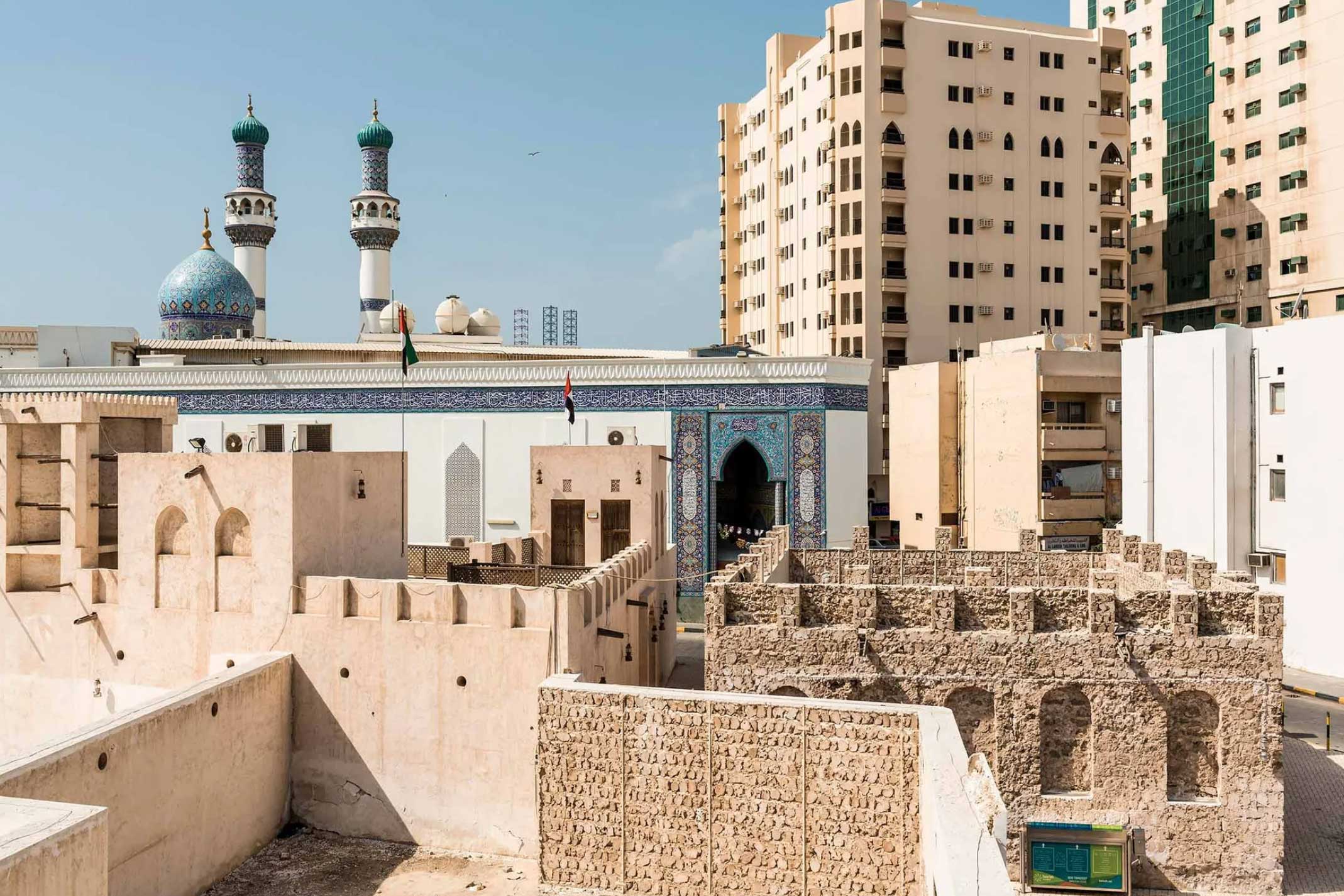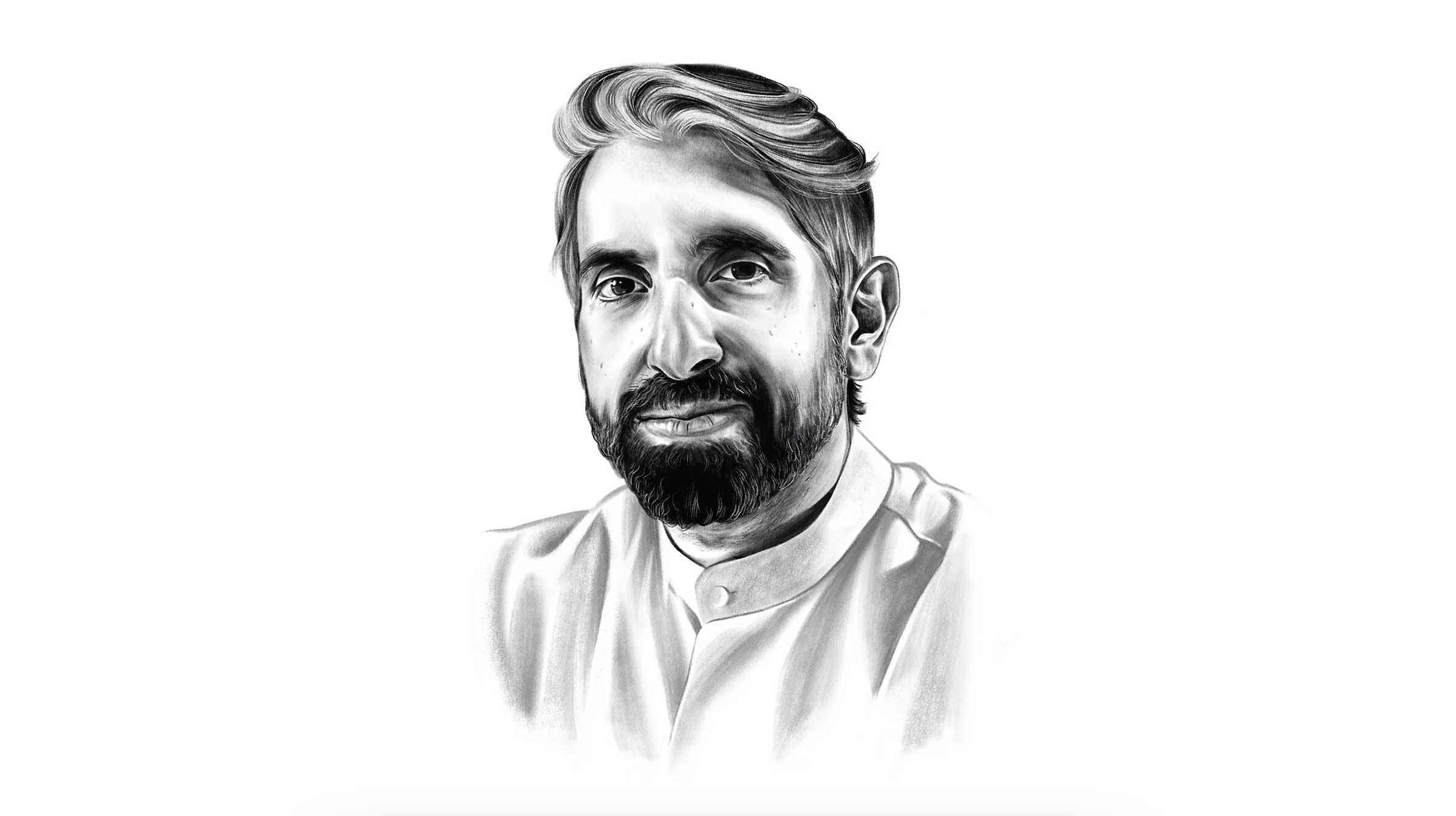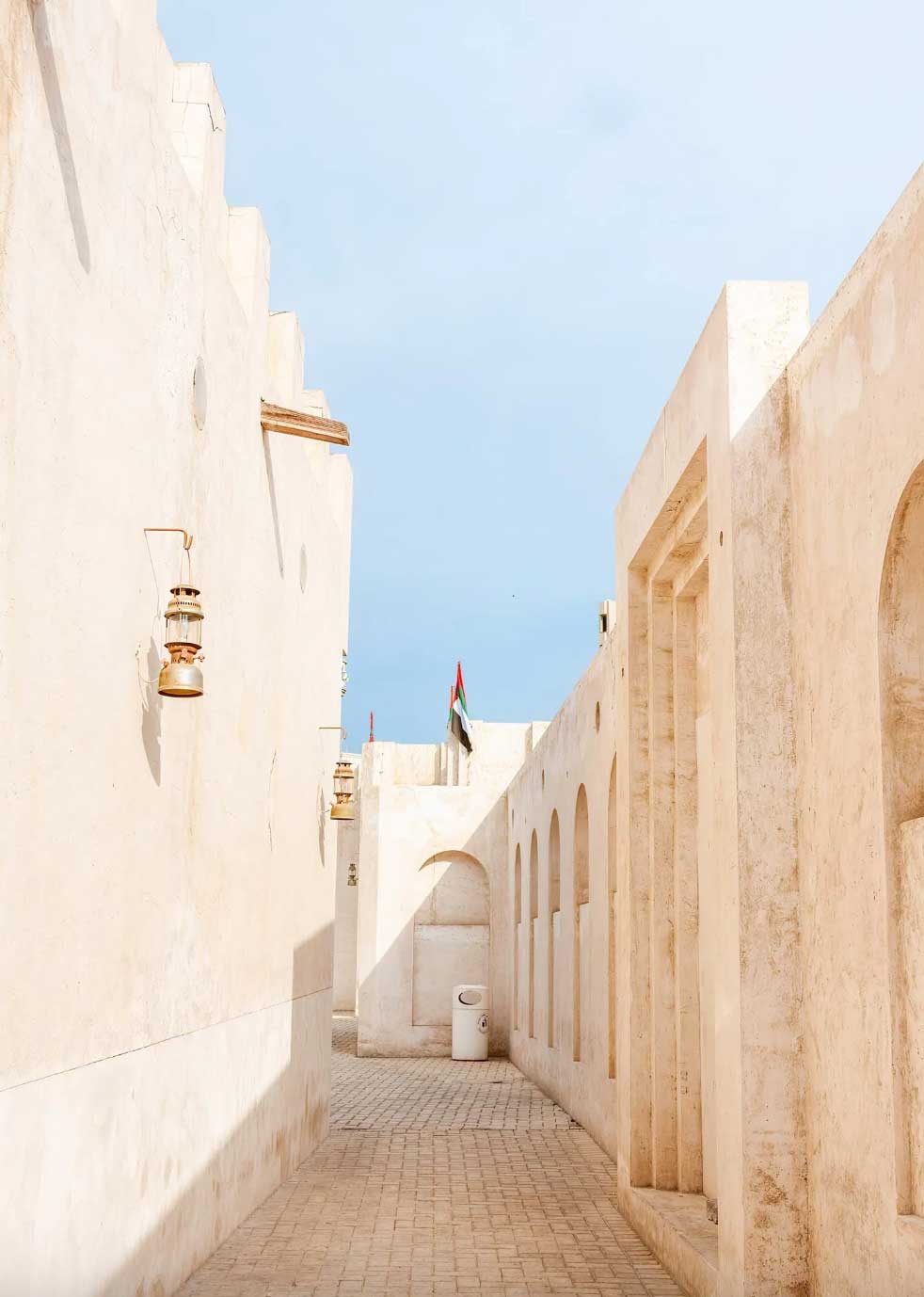Dubai, Kuwait and Riyadh turned away from the past to make way for modern skyscrapers, but UAE’s Sharjah takes a different tack.
AUTHOR: ZIAD DAOUD

After the discovery of oil in the late 1930s, Riyadh and Kuwait City moved fast and broke things. Rows of concrete-and-glass buildings rose out of the desert, replacing traditional mud-brick architecture and suggesting a Middle Eastern twist on Las Vegas. Dubai followed the same model after its own oil discoveries in the ’60s.
Like the mayors of US cities in the era of urban renewal, the Gulf rulers demolished historic architecture and left little room for the kinds of parks and walkways that elevate city life. In search of the global future, they obliterated the local past.
But Sharjah, Dubai’s neighbor in the United Arab Emirates, developed differently. That’s partly because the UAE’s third-largest city came late to the party—it struck oil within its emirate in 1972 and only started exporting crude two years later. Its rulers had a chance to learn from the demolition-style approach of its peers. Although Sharjah has its share of generic office towers, its leaders are preserving swaths of the city. Its original center is undergoing a rebirth as a heritage and arts district, known as the Heart of Sharjah. Scheduled for completion in 2025, it offers visitors narrow, old-style alleys; an old souk, or market; and museums in historic buildings.
To help understand Sharjah’s approach, and what it means for the region, few can offer more insight than Sultan Sooud Al Qassemi. He’s an Emirati columnist, researcher, art collector, university lecturer—and a member of Sharjah’s ruling family.
With Todd Reisz, an architect and visiting assistant professor at Yale University, Al Qassemi co-edited Building Sharjah, a collection of essays on architecture, art and history. Published in 2021, the volume asks readers to “reimagine the ways wealth can build a city.”

The book reflects the remorse of many in the Gulf at the destruction of historic buildings amid a renewed appreciation of the past. In 2018, Abu Dhabi opened the restored 18th century Qasr Al Hosn, or White Fort, as a museum. A year later the National Museum of Qatar opened a refurbished early 20th century palace of one of the country’s rulers. “There’s a longing for a simpler time, when the local population was the majority,” says Al Qassemi, who serves on a committee for preserving the UAE’s modern architectural heritage. “These buildings are representations of times of plenty. Not in terms of material wealth, but plenty of family connections, social cohesion and the Arabic language.”
In an interview at his family’s investment office, Al Qassemi, 46 and dressed in dark Arab robes, represents a mix of modern and traditional. He studied business at the American University of Paris, which fed his enthusiasm for art and architecture. An avid collector, he owns more than 1,800 artworks from West Asia and North Africa. His first acquisition, in the early 2000s, was a watercolor of a traditional gate by the Emirati painter Abdul Qader Al Rais. Today, Al Qassemi focuses more on modern art that emphasizes the region’s religious and ethnic minorities, as well as its women. As he speaks, he’s surrounded entirely by works from female artists.
In Al Qassemi’s view, preservation promotes economic development because it draws visitors, for both pleasure and business. “Yes, tourists are interested in the beach and the sun and the sand and all that,” he says. “But they’re also interested in authenticity and heritage and having a unique experience.” Similarly, expatriates working in the UAE are looking for parks, cultural sites, museums, galleries, running paths and cycling lanes, he says.
The proliferation of these attractions has overshadowed the role of the mosque, “traditionally the only public space in the Gulf,” Al Qassemi says. This shift serves a political purpose, too. After the Arab Spring in 2011, Gulf states started cracking down on religious gatherings to stem the rise of fundamentalism.

At the same time, Al Qassemi worries about a region where professionals, and even government officials, conduct business in English. “The future is bleak for the Arabic language in the Gulf,” he says. “It might be too late to salvage Arabic for an entire generation of people from the Gulf. We have to think about the next generation.”
As Al Qassemi sees it, the region’s cities must balance entrepreneurial dynamism with cultural and historical preservation. “Yes, we look towards the future, but we also need to acknowledge our distant as well as our recent past,” he says. “That includes our music, our poetry, our literature, our architecture and our art.”
Daoud, based in Dubai, is the chief emerging-markets economist for Bloomberg Economics.
This article was originally published in Bloomberg on April 18, 2024. A PDF screenshot of the original article can be downloaded here.